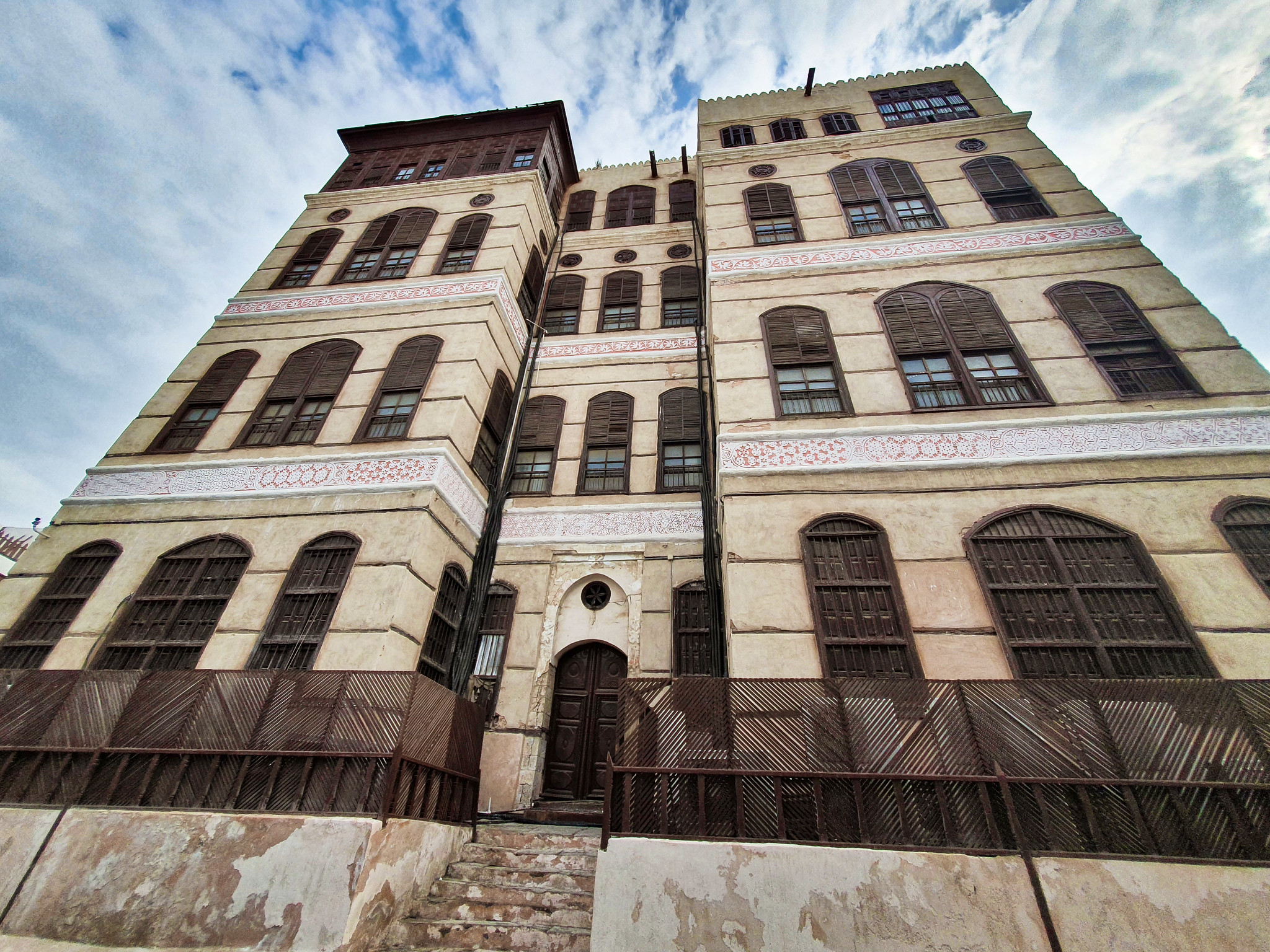Nestled in the heart of Jeddah’s historic Al-Balad district, the Nassif House Museum stands as a testament to the rich cultural heritage of Saudi Arabia. This architectural marvel, once the residence of the prominent Nassif family, now serves as a window into the past, offering visitors a unique glimpse into the traditional lifestyle of Jeddah’s elite during the late 19th and early 20th centuries.
As you approach the museum, you’re immediately struck by its imposing facade. The multi-story structure, built entirely of coral stone, is a prime example of the Hijazi architectural style that once dominated the region. Its intricate wooden lattice windows, known as mashrabiya, not only add to the building’s aesthetic appeal but also served a practical purpose in the pre-air conditioning era, allowing for natural ventilation while maintaining privacy.
Stepping inside, you’re transported to a bygone era. The museum’s interior is a labyrinth of rooms and corridors, each telling its own story. The ground floor, once used for receiving guests and conducting business, now houses a collection of artifacts that showcase the commercial importance of Jeddah as a major port city. From ancient trade ledgers to antique weighing scales, these exhibits paint a vivid picture of the bustling mercantile life that once thrived in the city.
As you ascend to the upper floors, you’ll find yourself in the more private areas of the house. Here, the museum offers a fascinating look into the domestic life of a wealthy Hijazi family. The women’s quarters, or haramlik, are particularly intriguing. These rooms, once off-limits to male visitors, are now open for all to explore. The ornate furnishings, colorful textiles, and personal items on display provide insight into the daily lives and social customs of the women who once called this house home.
One of the highlights of the museum is undoubtedly the rooftop terrace. From this vantage point, visitors can enjoy breathtaking views of the surrounding Al-Balad district, with its narrow alleyways and traditional coral stone buildings. It’s easy to imagine how the Nassif family might have spent their evenings here, enjoying the cool sea breeze and the stunning sunset over the Red Sea.
Throughout the museum, informative placards and multimedia displays complement the physical exhibits, providing context and bringing the history of the house and its inhabitants to life. These modern touches are seamlessly integrated into the historic setting, enhancing the visitor experience without detracting from the authenticity of the space.
What sets the Nassif House Museum apart from other heritage sites is its commitment to preserving not just the physical structure, but also the intangible cultural heritage of Jeddah. Regular cultural events, including traditional music performances and craft demonstrations, are held in the museum’s courtyard, allowing visitors to engage with living traditions.
As you conclude your visit, you’ll likely find yourself in the museum’s gift shop, where you can purchase locally made crafts and souvenirs. This thoughtful addition not only supports local artisans but also allows visitors to take a piece of Jeddah’s cultural heritage home with them.
The Nassif House Museum offers more than just a glimpse into the past; it provides a comprehensive and immersive experience that brings the history and culture of Jeddah to life. Whether you’re a history buff, an architecture enthusiast, or simply curious about Saudi Arabian culture, this hidden gem in the heart of Al-Balad is well worth a visit. As you leave, you’ll carry with you not just memories, but a deeper understanding and appreciation of Jeddah’s rich cultural tapestry.
The Nassif House Museum stands as a significant cultural landmark in Jeddah, Saudi Arabia, offering visitors a glimpse into the traditional architecture and lifestyle of the region’s wealthy merchants during the late 19th and early 20th centuries. This well-preserved coral stone building showcases intricate Islamic designs, ornate wooden balconies, and authentic period furnishings. As one of the few remaining examples of Hijazi architecture, the museum plays a crucial role in preserving Saudi Arabia’s heritage and educating both locals and tourists about the area’s rich history. The Nassif House Museum serves as a testament to Jeddah’s importance as a historical trading hub and continues to be an essential destination for those seeking to understand the cultural and architectural legacy of the Red Sea coast.

